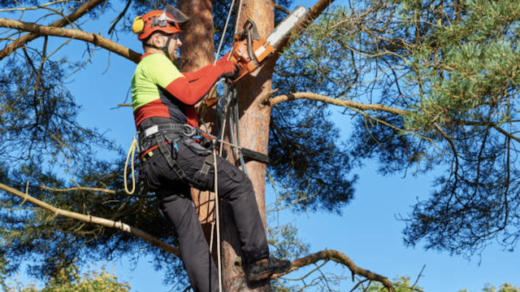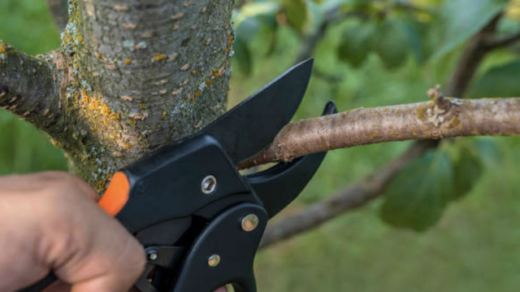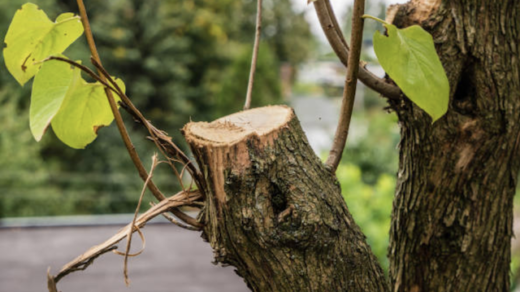Trees are living organisms, so it stands to reason that they can get “sick” just like people and animals can. A disease or other tree problem might take a little while to show itself because of the overall size of the tree, and once you notice a symptom, it could be too late to save the tree.
A professional arborist from SC Tree Trimming can help you identify and treat tree issues so that you have a much greater chance of keeping the tree. Learn about our service here. Not only can an arborist help to stop a tree from dying, but they can also help trees get more healthy growth and bloom more flowers or fruit with professional tree pruning.
Have you noticed a tree on your property that has always seemed healthy but all of the sudden looks like something is wrong? In the next paragraphs, we’ll explain some of the most common tree issues and what these symptoms mean.
If you spot any of these things on any of the trees on your property, act fast to have the best chance of saving the tree and the ones around it.
Tree Diseases & Common Problems
These 7 things are the most frequent issues encountered by experienced arborists in South Carolina. Once you think one of these things is wrong with your tree, call someone with the training and tools to help!
Tree Diseases
Leaf Rust – Leaf rust is a fungus that is very common in both plants and trees. The name originates from the brown and yellow spots this disease creates on the leaves.
Leaf rust is dangerous because it inhibits the leaves’ photosynthesis, the process by which it breathes. Leaf rust can be treated with fungicides and selective trimming of the affected leaves. It could be recommended to remove whole branches with leaf rust.
Witches’ Broom – This common disease creates a large clump of twigs, dead leaves and branches that resemble a broom shape. It is caused by pests, unusually wet weather or fungus. The formation of a clump of twigs and leaves is the tree’s reaction to infection or harm.
Some cases of Witches’ Broom are deadly for the tree, others are only considered a growth malformation. A tree care specialist can diagnose the problem.
Mildew – Mildew is a fungus that grows on almost anything in moist conditions, but even when the wet conditions are gone, mildew can remain and thrive. Mildew appears as a powdery substance, typically white, and it usually appears on the leaves of a tree first.
The the best method for eliminating mildew is to use a fungicide that includes sulfur. This will remove the current mildew and prevent future mildew on the tree. You may also need to prune the tree to remove branches, fruit, flowers and leaves that were affected by the mildew
Gall – Gall is a type of tree disease that appears when pests or rodents build small nests on the leaves or branches of a tree to lay their eggs in. Most types of galls are not dangerous for the tree, but they are not attractive.
Gall will appear as bumps on the tree, in a range of sizes. They can be white, brown, gray or some shade in between.
You do not have to treat the tree for galls, but they can affect the growth of recently planted trees. Treat galls by killing the insects. You should also clean out from under the tree when the leaves fall off, since this is where the pests survive during winter months.
Other Tree Problems
Poor Pruning – There’s a discipline to tree trimming, as well as many types, and if you aren’t sure how to do it, you could damage the tree beyond recovery. Consider the type of tree, season and other factors. Under-pruning (or a lack of pruning at all) is just as big of an issue. Only an experienced arborist should be trusted to prune trees in order to keep them healthy.
Lack of Water – Young trees can be severely affected by drought. If you plant new trees, you will need to supplement the amount of water they get from rainfall. A tree that doesn’t get enough water will have its growth inhibited. The first symptom you are likely to see is scorched or dry leaves. Find more tips for new trees here.
Too Much Sun – Do some initial research before planting trees in a full-sun area. Many species of trees can handle it just fine, but too much sun can become a problem for any tree if the sun is harsh for a long period of time and rainfall is light. A tree that is getting a lot of sun needs extra water to fight against wilting, drooping leaves.
Certified Arborist Services in South Carolina
An experienced arborist from SC Tree Trimming will quickly diagnose what’s going on with your sick tree and formulate a plan to rescue it if at all possible.
Here are the things an arborist is qualified to do:
- Review trees from below and from the limbs of the tree if necessary. Climbing into the canopy is often necessary to identify exactly what is causing the symptoms.
- Treat your tree through fertilizers and additives in the soil or products applied to the leaves. This person will have expert knowledge about the disease impacting the tree and the most effective treatments.
- Prune tree limbs to get rid of dead or diseased branches and to help healthy growth. Even if heavy trimming is necessary, they will know how to remove branches so that the tree can survive both the disease and the trimming process.
- Remove the tree from your lawn if nothing can be done to save it. The worst case is that the tree is dying, and cutting it down is the only way to protect your home and surrounding landscape.
Arborists can also educate you about the trees that you have om your property and how to best care for them so you don’t return to the same situation in the future.
Some tree problems look similar to one another, requiring an expert eye to correctly diagnose and correct the issue. If your trees are looking dry, disfigured or dying, call a professional arborist from SC Tree Trimming for an inspection before it’s too late for your tree.






